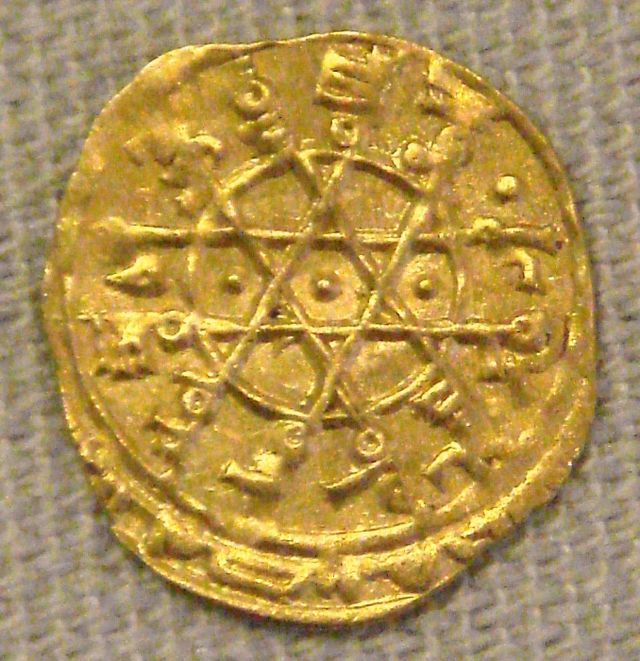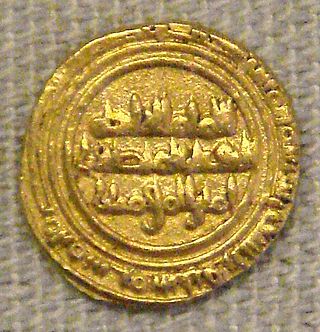Top Qs
Timeline
Chat
Perspective
Tarì
Currency From Wikipedia, the free encyclopedia
Remove ads
Tarì (from Arabic طري ṭarī, lit. 'fresh' or 'newly minted money')[1] was the Christian designation of a type of gold coin of Islamic origin minted in Sicily, Malta and Southern Italy from about 913 to the 13th century.[2]



Remove ads
History
Summarize
Perspective
In the Islamic world, this type of coin was designated under the name ruba'i (رباعي), or quarter-dinar, as it weighed 1.05 g (0.034 ozt) of gold.[1] The ruba'i had been minted by the Muslims in Sicily, unlike the Muslim rulers of North Africa, who preferred the larger dinar.[3] It became highly popular as it was smaller and therefore more convenient than the large-sized 4.25 g (0.137 ozt) dinar.[4]
The tarì were so widespread that imitations were made in Southern Italy (Amalfi and Salerno) from the mid-tenth century, which only used illegible "pseudo-Kufic" imitations of Arabic.[1][4][3] When the Normans invaded Sicily in the 11th century, they issued tarì coins bearing legends in Arabic and Latin.[5] Roger II of Sicily issued such coins, becoming the only Western ruler at that time to mint gold coins. Their composition was 16+1⁄3 carat gold (0.681 fineness) with some adjunction of silver and copper.[3] The tarì were also produced by the Hohenstaufens and the early Angevins.[6]
The tarì coins were generally minted from African gold obtained from Misrata or Tunis in North Africa in exchange for grain.[6] Nowadays, the tari is a subunit (1⁄12) of the scudo, souvenir coins issued by the Sovereign Military Order of Malta.
Remove ads
See also
References
External links
Wikiwand - on
Seamless Wikipedia browsing. On steroids.
Remove ads
